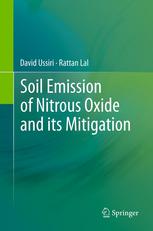

Most ebook files are in PDF format, so you can easily read them using various software such as Foxit Reader or directly on the Google Chrome browser.
Some ebook files are released by publishers in other formats such as .awz, .mobi, .epub, .fb2, etc. You may need to install specific software to read these formats on mobile/PC, such as Calibre.
Please read the tutorial at this link: https://ebookbell.com/faq
We offer FREE conversion to the popular formats you request; however, this may take some time. Therefore, right after payment, please email us, and we will try to provide the service as quickly as possible.
For some exceptional file formats or broken links (if any), please refrain from opening any disputes. Instead, email us first, and we will try to assist within a maximum of 6 hours.
EbookBell Team

4.3
98 reviewsNitrous oxide gas is a long-lived relatively active greenhouse gas (GHG) with an atmospheric lifetime of approximately 120 years, and heat trapping effects about 310 times more powerful than carbon dioxide per molecule basis. It contributes about 6% of observed global warming. Nitrous oxide is not only a potent GHG, but it also plays a significant role in the depletion of stratospheric ozone. This book describes the anthropogenic sources of N2O with major emphasis on agricultural activities. It summarizes an overview of global cycling of N and the role of nitrous oxide on global warming and ozone depletion, and then focus on major source, soil borne nitrous oxide emissions. The spatial-temporal variation of soil nitrous oxide fluxes and underlying biogeochemical processes are described, as well as approaches to quantify fluxes of N2O from soils. Mitigation strategies to reduce the emissions, especially from agricultural soils, and fertilizer nitrogen sources are described in detail in the latter part of the book.